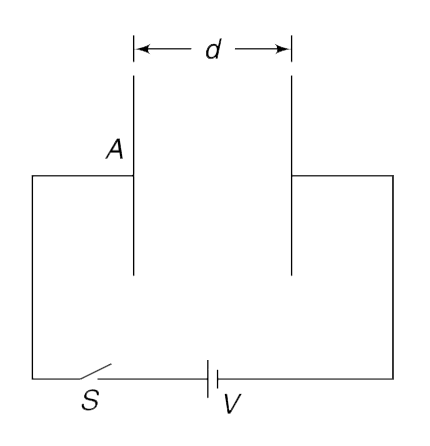Work-Energy Theorem
NA
Similar Questions
A mass of 0.675 kg on a frictionless table is attached to a string which passes through a hole in the table at the centre. If the radius of the circle in which the mass rotates, is 5 m when its speed is 10ms−1, find the tension of the string. It is found that on drawing down the string by 0.2 m, the tension is increased 4.63 times. Calculate the work done by the string on the revolving mass during the reduction of the radius.
[Hint : Apply work-energy theorem to find work done by the force]View SolutionIn picking upan object from the floor and putting it on a table, we do work. However, the initial and final values ofthe object's kinetic energy are zero. Is there a violation of the work energy theorem here ? Explain why or why not.
View Solution
Knowledge Check
- Question 1 - Select One
STATEMENT-1: Work done by the net force acting on a particle is equal to the change in its kinetic energy.
STATEMENT-2: Change in potential energy is always equal to the work done by external forces.
STATEMENT-3: Work energy theorem is not applicable, if the work is done by the non-conservative forcesAT T FBT F TCT F FDF T T
According to work energy theorem or work energy principle, work done by net force in displacing a body is always equal to change in K.E. of the body. Similarly , if some work is drawn from the body, K.E. of the body decreases by the same amount. In either process, we assume that potential energy of the body does not change.
Read the above passage and answer the following question:
(i) A car weighing 500 kg is running at a speed of 72km/h. In how much distance will it stope by applying a braking force of 4000N?
(ii) What are the implication of this theorem in day to day life ?View SolutionA point charge q0 is moved slowly from the centre of a ring R, ( that is carrying a charge q) to a distance x from its centre along its axis. What is the work done by the external agent in this process ?
Strategy : According to work energy theorem, if there is no change in kinetic energy, we have
Wext+WE=0
⇒Wext=−WE
=−q0(VA−VB)View SolutionA block of mass 2kg slides on a frictionless table with with a speed of 10ms−1. Directly in front of it and moving in the same direction is a block of mass 5 kg moving at 3ms−1. A massless spring with force constant k=1120Nm−1 is attached to its back (the side facing 2 kg mass) When the blocks collide, what is the maximum compression of the spring ?
[Hint : Apply 'work energy' theorem to the system of block and principle of conservation of momentum]View SolutionA parallel plate air capacitor has plate area A and separation between the plates d. Switch S is closed to connect the capacitors to a cell of emf V.
(a) Calculate the amount of heat generated in the circuit as the capacitor gets charged.
(b) Calculate the force (F) that one capacitor plate exerts on the other. (c) The distance between the plates is slowly reduced to d2. Calculate the work done by the external agent in the process. For your calculation use the basic definition of work as work = force × displacement.
(d) How much energy is dissipated in the circuit as the distance between the plates is reduced from d to d2 ? Try to give answer without any calculations. Give reasons. Now use work energy theorem to show that your answer is right.
 View Solution
View SolutionYou are reshelving books in a library. You lift a book from the floor to the top shelf. The kinetic energy of the book on the floor was zero and the kinetic energy of the book on the top shelf is zero, so no change occurs in the kinetic energy even though you did some work in lifting the books. Is the work-kinetic energy theorem violated?
View SolutionWork Power And Energy - Problems On Energy
View Solution(i) The cause of increases in kinetic energy when a man starts running without his feet slipping on ground is asked to two students. Their answers are– Harshit: Cause of increase in kinetic energy is work done by friction force. Without friction the man cannot run. Akanksha: Cause of increase in kinetic energy is work done by internal (muscle) forces of the body. Who is right? (ii) An inextensible rope is hanging from a tree. A monkey, having mass m, climbs to a height h grabbing the rope tightly. The monkey starts from rest and ends up hanging motionlessly on the rope at height h. (a) How much work is done by gravity on the monkey? (b) How much work is done by the rope on the monkey? (c) Using work – energy theorem, explain the increase in mechanical energy of the monkey.
View Solution

